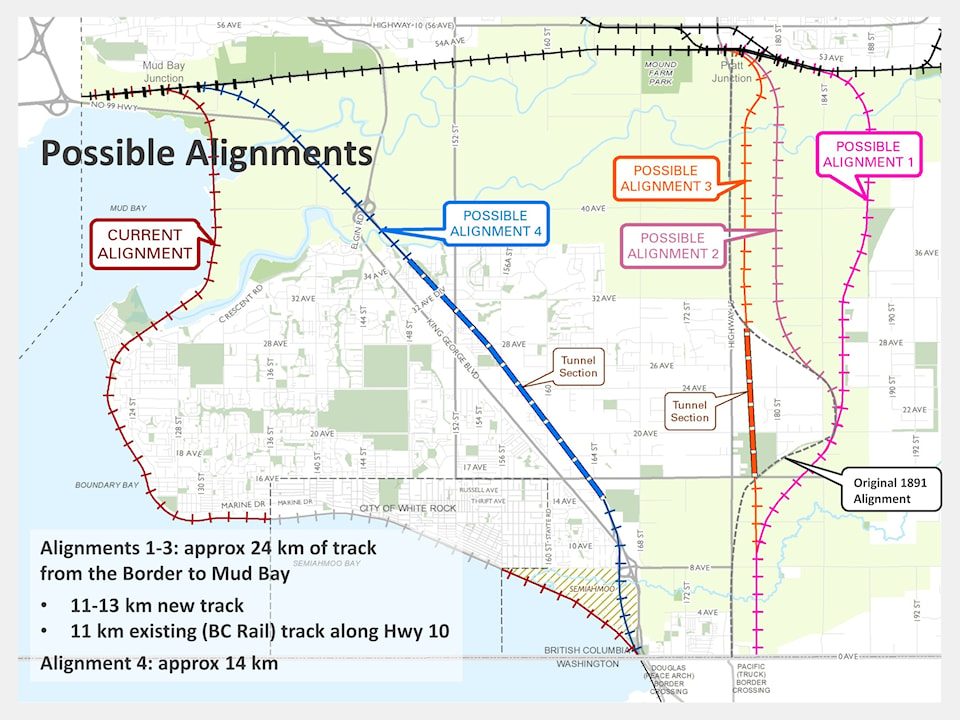The Editor,
The inevitable movement of the Boundary Bay rails will have little to do with the relative worth of blueberry fields or the ocean foreshore. It will be driven by simple math.
The new route will be five kilometres shorter and 30 minutes faster. The shorter, wider, faster route is not only safer, it gives a return on investment. It will support Port Metro Vancouver (PMV) growth, and the expansion of Canada-U.S. trade. It will compliment the port's investment in Roberts Bank and secure Canada's economic relevance for the next 100 years.
The main artery for moving goods between Canada and the U.S. is a single track, winding along the edge of a bay, under an unstable bluff, with no possible emergency access from land or sea. It crosses three rivers, two bird sanctuaries, and a 100-year-old swing bridge. It bisects two level crossings, three public beaches, a boat launch and serves as a de-facto hiking path for thousands of foreshore visitors.
In 12 years, freight along the bay has grown fourfold, and PMV projects further increases. The once sleepy old corridor is isolating communities as it runs out of capacity. The reason it has not moved sooner is because the math didn't need it to.
Ironically, the growing problem also brings the basis for a solution. The only remaining question is when, and we look to our leaders for this answer. Once answered, it will unlock a 12-mile national treasure for the benefit of the nearly one million people living south of the Fraser. It will forever change the evolution of the region by allowing the flow of people and ideas between Vancouver and the emerging bay communities.
Erik Seiz, president,
Crescent Beach Property Owners Association
